Regulatory signs give notice to motorists of traffic laws and regulations. They apply either at all times or at specified times, or places, in a street or highway. Disregarding regulatory signs may constitute a traffic violation.
Regulatory signs use the colors white, red, and black. They usually come with a white background, and the words and graphics are typically in red, with additional black markings.
These are the 10 common regulatory traffic signs you will see on the road every day:
1. Stop
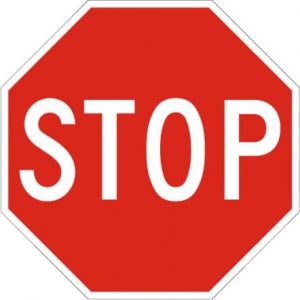
Source: TrafficSigns.com
The Stop sign requires you to come to a complete stop at the limit line, crosswalk, or before the intersection.
2. Yield

Source: TrafficSigns.com
When you see this sign, slow down and stop if necessary to give way to the vehicles in the cross traffic path. Proceed only when it is safe.
3. Speed Limit
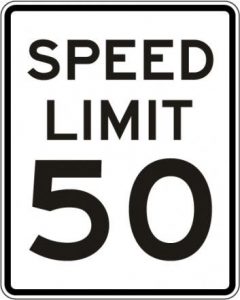
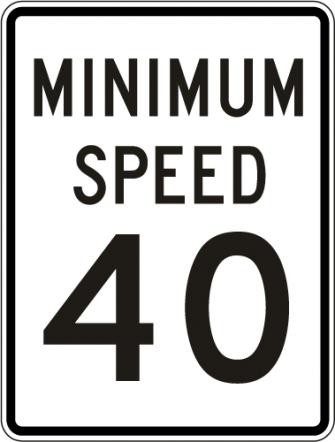
Source: TrafficSigns.com
Speed limit signs tell you the maximum speed and/or minimum speed allowed by law on the highways or roadway that you are driving on.
4. Wrong Way

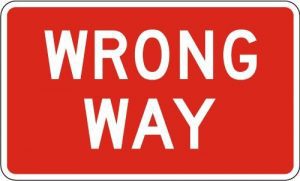
Source: TrafficSigns.com
This sign usually appears with the Do Not Enter sign; and when you see this sign, it means you are going the wrong way. As soon as you can, pull over and stop until it is safe to turn around. If you are driving at night, you will know you are going the wrong way when you see road reflectors that shine red.
5. Do Not Enter
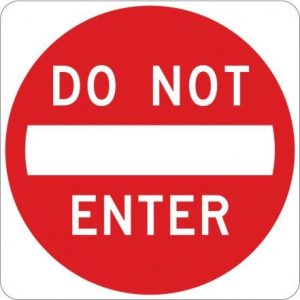
Source: TrafficSigns.com
Do Not Enter signs often appear with the Wrong Way signs, and you should never drive toward or past this sign because you will likely be driving the wrong way into oncoming traffic.
6. One Way

Source: TrafficSigns.com
This sign marks a one-way street, and the arrow points in the direction that the traffic flows. When you encounter a one-way sign, you must drive in the direction that the sign is pointing. Going in the opposite direction will put you at risk of a head-on collision.
NO TURN SIGNS
7. No U-Turn

Source: TrafficSigns.com
This sign means that you cannot perform a 180-degree turn to reverse your direction of travel—a maneuver that looks like a letter “U.”
8. No Left Turn / No Right Turn
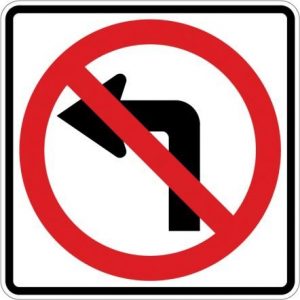
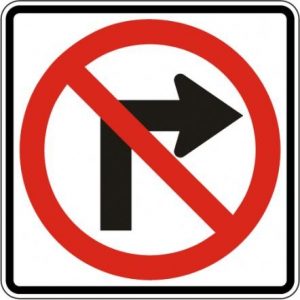
Source: TrafficSigns.com
These are straightforward signs that prohibit drivers from making the indicated turn. Both signs are put up to prevent accidents that could result if a driver made that right or left turn.
9. No Parking
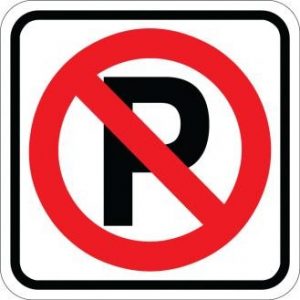
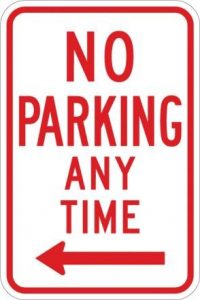
Source: TrafficSigns.com
The standard sign tells you that you are not permitted to park. The sign either consists merely of the letter “P” in black with a red circle and slash over it against a white background, or it may say No Parking at Any Time.
Other No Parking signs indicate a time limit or a specific time when parking is allowed, or who are allowed to park:
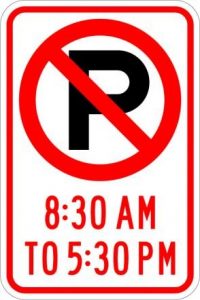
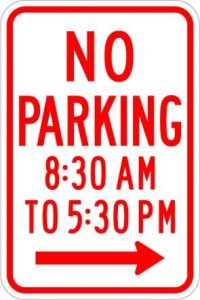
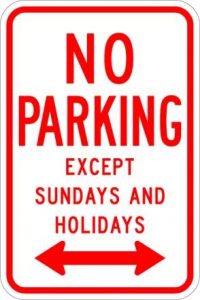
Source: TrafficSigns.com
10. HOV Signs
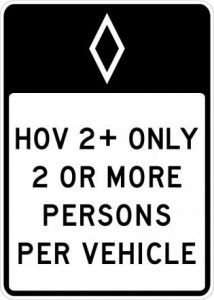
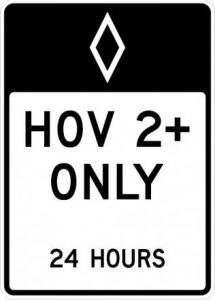
Source: TrafficSigns.com
HOV means High Occupancy Vehicles, and HOV signs indicate that a lane is an HOV lane (also called carpool lane). HOV lanes can be used by people sharing a ride, same-area residents, and other drivers who meet the lane rules, which is typically that the vehicle has two/three or more occupants, including the driver. (Note, however, that lane rules may differ from one city to another.)
The HOV lane is typically on the inside (left) of the highway. Unlike other regulatory signs that include the color red, HOV signs are typically just black and white with a diamond symbol. In addition to the signs, the diamond symbols may be painted on the pavement as well.
Knowing what regulatory traffic signs each indicate ensures that you can respond appropriately and within the time frame that you’re supposed to act. This helps ensure your safety and that of the other people on the road.

